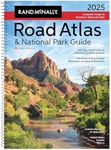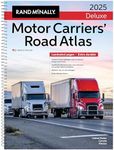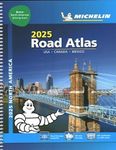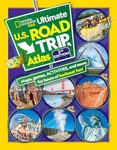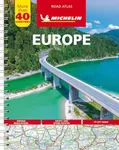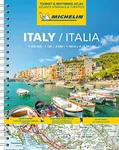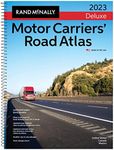Buying Guide for the Best Road Atlases
Choosing the right road atlas can make your travels smoother and more enjoyable. A road atlas is a collection of maps that provide detailed information about roads, highways, and other important landmarks. When selecting a road atlas, it's important to consider several key specifications to ensure it meets your needs. Here are some important factors to consider when picking the best road atlas for you.ScaleThe scale of a road atlas indicates the level of detail provided in the maps. It is usually represented as a ratio, such as 1:100,000, where one unit on the map equals 100,000 units in real life. A larger scale (e.g., 1:50,000) provides more detail and is useful for local or regional travel, while a smaller scale (e.g., 1:200,000) covers larger areas with less detail, suitable for long-distance travel. Choose a scale based on the type of travel you plan to do; detailed scales are better for exploring specific areas, while broader scales are ideal for cross-country trips.
Coverage AreaThe coverage area of a road atlas refers to the geographic regions included in the maps. Some atlases cover specific countries, states, or regions, while others provide comprehensive coverage of entire continents. Consider where you will be traveling and ensure the atlas includes those areas. If you frequently travel within a particular region, a regional atlas may be more useful, whereas a national or continental atlas is better for extensive travel across multiple areas.
Map FeaturesMap features in a road atlas include various elements such as road types, landmarks, points of interest, and topographical details. These features help you navigate and plan your journey more effectively. Look for atlases that highlight major highways, secondary roads, scenic routes, and important landmarks like national parks, rest areas, and tourist attractions. Depending on your travel needs, you may prefer an atlas with detailed topographical information for outdoor adventures or one that emphasizes urban areas for city travel.
Size and PortabilityThe size and portability of a road atlas are important for convenience and ease of use. Atlases come in various sizes, from large, detailed books to compact, pocket-sized versions. Larger atlases provide more detailed maps but can be cumbersome to carry, while smaller atlases are more portable but may lack some detail. Consider how you will use the atlas; if you need it for quick reference on the go, a smaller, portable version may be best. For detailed trip planning, a larger atlas might be more suitable.
Update FrequencyThe update frequency of a road atlas refers to how often the maps are revised to reflect changes in roads, highways, and other infrastructure. Regular updates ensure that the information is current and accurate, which is crucial for effective navigation. Check the publication date and how often the atlas is updated. If you travel frequently or in areas with rapid development, choose an atlas that is updated annually or biennially to ensure you have the most recent information.
Additional InformationAdditional information in a road atlas can include travel tips, city guides, mileage charts, and indexes. These extras can enhance your travel experience by providing useful insights and helping you plan your route more efficiently. Look for atlases that offer comprehensive indexes for easy map navigation, mileage charts for trip planning, and travel tips for local attractions and amenities. Depending on your travel style, these additional features can be very beneficial.


